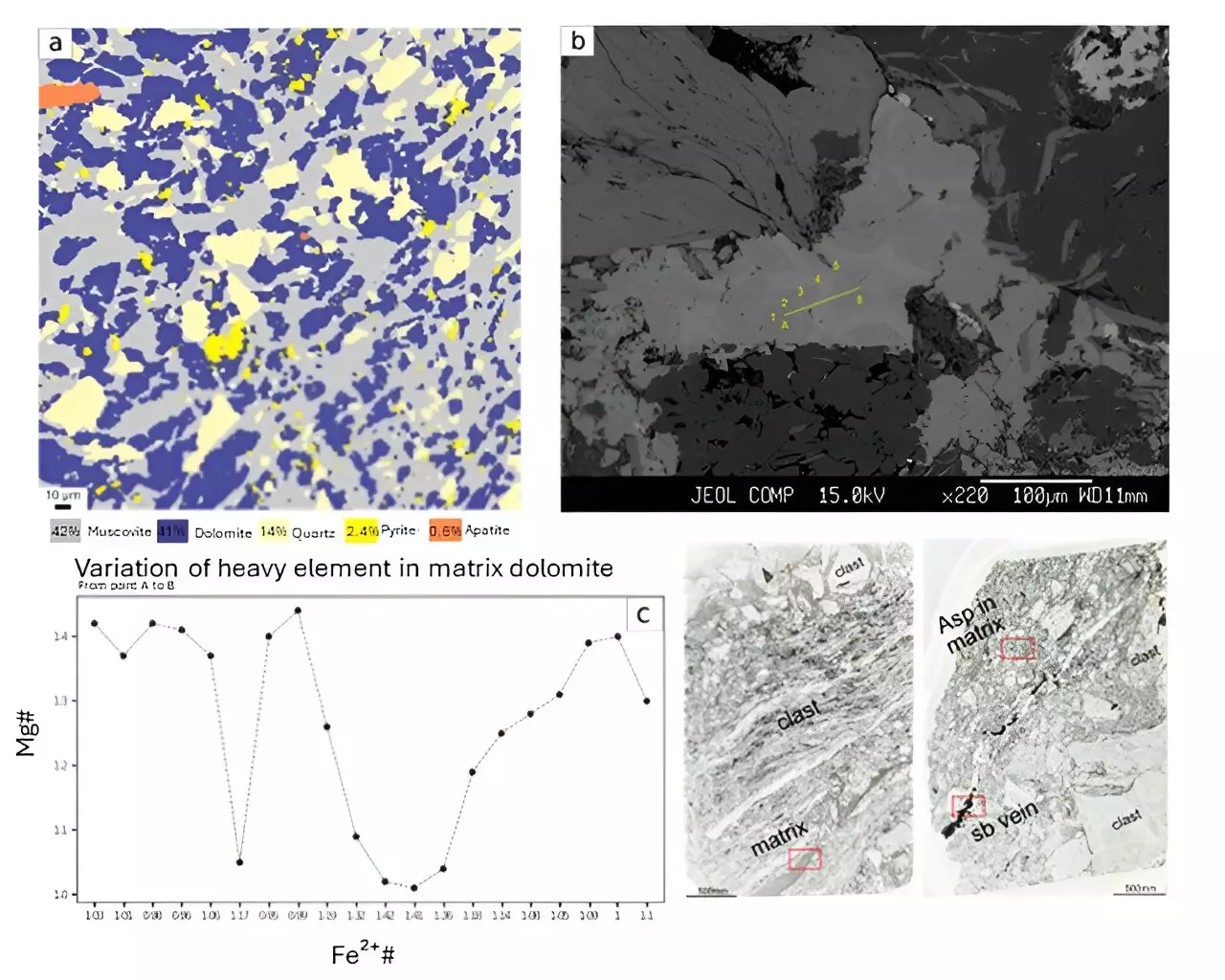When Noriyoshi Tsuchiya embarked on a research field trip to the Ichinokawa Mine in 2017, he was initially captivated by the sword-shaped stibnite crystals that the mine is renowned for. However, it was the unassuming sedimentary rock bundle known as breccia that ultimately captured his attention. Tsuchiya, a professor at the Graduate School of Environmental Studies and the Hachinohe National College of Technology, found that the breccia contained valuable evidence that could shed light on past seismic events. This unexpected discovery prompted further investigation into the geological record held within the breccia.
Unlike traditional methods of estimating earthquake energy, which rely on seismic monitoring and historical data, Tsuchiya’s research focuses on the unique characteristics of breccia formations. The breccia found at Ichinokawa Mine offers a tangible record of seismic activity along the Median Tectonic Line (MTL), a prominent fault line in Japan. By studying the fragmented rocks within the breccia, Tsuchiya and his team were able to glean insights into the energy released by past earthquakes. Through a combination of field observations and laboratory analyses, they were able to estimate the magnitude and frequency of seismic events that shaped the region.
One of the key findings of the study was the discrepancy between the energy required to explain the fragmentation patterns within the breccia and traditional models based on hydrofracturing. By employing statistical and fractal analyses of angular deformation and rock textures, Tsuchiya’s team proposed a new model that accounts for a wider range of factors influencing seismic energy release. The presence of carbonates such as CaMg(CO3)2 in the breccia provided further evidence of multiple seismic events, leading to the conclusion that the breccia was formed by a series of earthquakes rather than a single isolated event.
Collaborating with the National Institute of Technology and Hachinohe College, Tsuchiya’s research has the potential to redefine our understanding of coseismic energy budgets in the region. The discovery of unique fragmentation patterns within the breccia suggests a more complex history of seismic activity than previously thought. By incorporating a multidisciplinary approach to analyzing geological formations, Tsuchiya’s research opens up new possibilities for assessing past earthquakes and their impact on the surrounding landscape.
The study of breccia formations at Ichinokawa Mine has provided valuable insights into the history of seismic activity in the region. Tsuchiya’s innovative approach to estimating earthquake energy based on rock characteristics offers a fresh perspective on understanding the geological forces at play. By challenging existing models and proposing new theories, Tsuchiya’s research has the potential to reshape our knowledge of seismic events and their long-term impact on the earth’s crust.


Leave a Reply